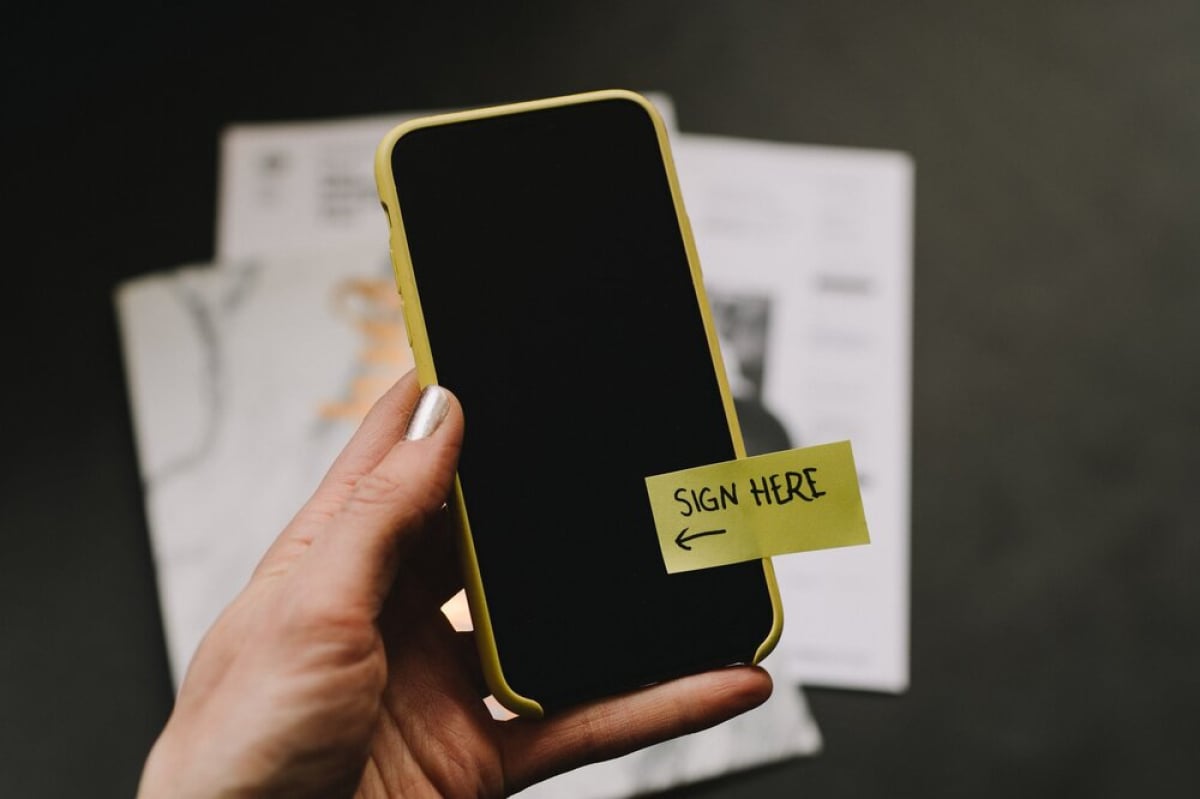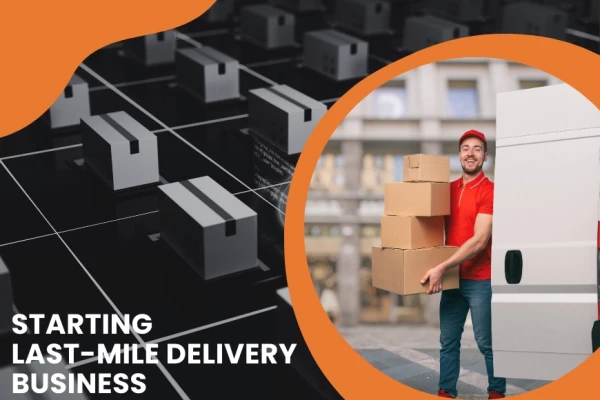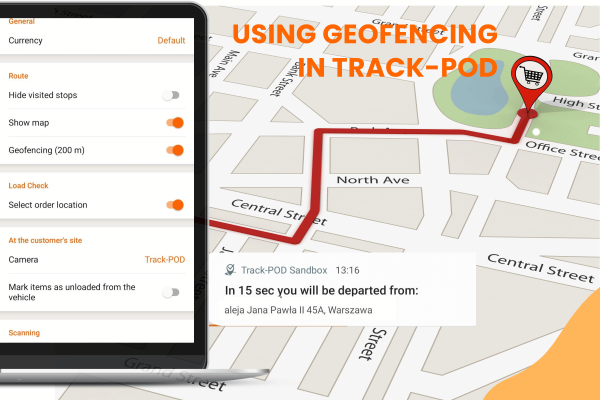Why Electronic Signature Capture Is More Important Than Ever

by
Tanya Derevyanko
April 11, 2022
We’ve witnessed the world change trying to adapt to the conditions introduced by the Coronavirus pandemic. People have had to obey strict no-contact rules which meant that companies needed to find new ways to complete simple processes, like signature capture via last mile logistics software and apps.
With the ongoing pandemic, safe package delivery practices are increasingly essential to mindful operational strategies, and client and worker care. E-signatures and contactless package delivery are now tied to the hip. And the fact is, there is a chance things will remain this way even after COVID-19 has passed.
What is an electronic signature?
Now let’s move on to electronic signatures, and signature capture.
In a pre-pandemic world, most people were likely completely unbothered about the method of signature capture used. Nevertheless, electronic signature capture has been on the scene for a long while already, and most people have probably used an e-signature numerous times.
Between 2012 and 2017, the electronic signature transactions grew from 89 to 754 million. And this practice has increased dramatically in the past year to allow for contactless and paperless deliveries. So, what is an electronic signature really?
E-signature is a type of digital data that gives people the ability to confirm their agreement to binding documents without hand printing their signature.
However, just as contactless delivery comes with a range of methods, so too do businesses use multiple ways of validating information electronically.
Your input method counts as an electronic signature if:
-
It authenticates information
-
It is a way to sign
-
It records and authenticates signatories
-
It proves delivery or intent
Thus, e-signatures can include unique PINs or codes, scanning technology, biometric passwords, and more.
Interesting stats on electronic signatures
-
Electronic signing systems decrease company expenses by 85%.
-
The use of hand-printed signatures adds approximately a whole day’s work to 65% of companies’ workloads.
-
Approximate e-signature implementation time: 9 months for large organizations, 5.5 months for medium-sized organizations, and 2.3 months for small companies.
-
Statista: Electronic signature capture grew by 665 million between 2012 and 2017.
-
Human error or processing errors can be decreased by around 90% with electronic signature capture and other paperless methods.
Benefits of e-signature capture
Digitalizing your logistics operations and moving to paperless deliveries comes with a lot of benefits. Let's go through the key ones.
Signing online saves time
Documenting signing tends to involve a whole lot of bureaucracy and a ton of waiting. Printing, sending, reviewing, and anxiously awaiting a signature and response are some of the time delays electronic signatures avoid. With e-signatures, this process becomes shorter and signatures can be executed in a matter of minutes, especially if all parties have the document beforehand.
Furthermore, electronic signature capture and paperless documentation make archive and document recovery speedier. Instead of rifling through rows and rows of file cabinets, you can simply type in the document name you want to find. It’s convenient and it saves time.
Convenient for customers
E-signatures are also convenient for customers, particularly amidst the remote environment of the Coronavirus pandemic. With digital transactions and documentation, customers have all the information they need at their fingertips if they want to make a complaint or log a return, for example.
Plus, the efficiency of your organization is paramount when it comes to customer satisfaction and bettering the customer experience. Electronic signature capture saves time for clients and customers, optimizing the process and increasing the convenience of transacting with your business.
Improves productivity and workflow
Not only does this maximize your time, but it also facilitates productivity. Paper records can damage and get lost easily- e-signatures reduce missing documents by 66%. Plus, the process of printing and delivering bulky files from one employee to another is its own job. Using digital documents streamlines your workflow as employees can access and sign files easily.
This also makes for quicker decision-making processes as you eliminate delays and bottlenecks in the sign-off process. Electronic signature capture is instant and reduces response time by 80%. Another pro is that individuals can sign from any location, avoiding the hubbub around getting someone into the office long enough to get their signed approval.
Cuts costs
Not having to print pages and pages of documents is a thumbs up for administrative costs to your organization. Furthermore, less paper usage promotes eco-friendly values and cost-conscious thinking.
Cutting environmental and financial costs and integrating more tech into your operations encourages a more sustainable business design that will keep your business on par with the world.
Better security
E-signatures can offer better security than pen and paper signatures. While forgery is common with regular signatures, your company can supplement a simple electronic signature with other authorization forms like password, or biometric verification.
According to Stanford University, e-Signature platforms now integrate biometric verification into all written signatures by measuring writing pressure, rhythm, and other factors. 45% of global businesses have implemented two-step verification processes like this to authenticate signatures.
With trustworthy organizational cybersecurity software, you can get the best benefits of this virtual tool, with a bonus of added security.
For software security, a developer can sign code with a code signing certificate. A few well-known code sign certs are DigiCert Code Signing, Comodo Code Signing certificate, and Sectigo Code Signing certs. A code sign certificate ensures developers and ends users about code security and code integrity.
Legal compliance
The possibilities of enhanced security and two-step verification with electronic signatures validate them as much as, if not more than physical signatures. Under the Electronic Signature in Global and National Commerce Act (ESIGN Act) and the Uniform Electronic Transactions Act (UETA), electronic signatures hold the same legal standing as their ink counterparts.
Globally, e-signatures are accepted. Many countries and governmental bodies have regulations on signatures and electronic signatures. However, for the most part, it is equally as binding as any other signature. In fact, some may argue that they are safer than normal signatures.
With the right e-signature software, your business can limit authorized parties that have the power to alter documents, heightening legal compliance and combating document tampering.

4 ways to introduce electronic signature capture
Now that you understand the power of electronic signatures and what they can do for your contact-free delivery, let’s explore fantastic ways that your business can introduce them today and encourage smooth contactless delivery.
Electronic signatures
Of course, the first way you can do this is by using delivery software that enables electronic signing. Track-POD’s software includes electronic signing as a feature that delivery drivers can conveniently access via a mobile application. You can also integrate electronic signature solutions with third-party systems like Human Resources apps, ERPs, CRMs, and workflow governance solutions.
Visual electronic signatures
If your use of signatures is about having proof of delivery, there’s a fun way to achieve this that is totally contactless. Encourage your delivery employees or partners to take an image of the customer with the package in hand on-site when they make their delivery.
They can then attach this image to relevant documents to prove the customer received their package. The advantage of this method is that you also get free time records to prove the delivery time, too.
The Internet of Things (IoT) & cloud computing
The Internet of Things (IoT) and cloud computing connect multiple devices to one another in the digital sphere. Businesses can take advantage of this by sharing and signing documents on cloud services like Google Drive or Apple Cloud. This is a wonderful choice for accessibility. A great option is to invest in custom cloud software with stringent security protection to ensure the safety of your data.
With this technique, individuals can sign from any location, and the document can record updates instantly across connected devices.
Biometric verification
Most smart devices today have the option to verify identity through biometric identification like fingerprint scans, facial or iris scans, and voice matching. These signature forms have the added benefit of guaranteeing you can identify the person who signed for packages.
Delivery businesses can use this to their advantage. Record fingerprint signatures and embed the data into your documents, to avoid forgery.
One-time PINs
A one-time PIN (OTP) is a password that is valid for a limited time period or a single session. Generally, an organization will send it to a user to verify their identity as Google does often to ensure security if a user logs in from a new device. Your delivery company can send customers a personalized PIN that the delivery person can request in exchange for the package.
As the customer receives the pin on their phone or personal platforms like email, entering the PIN verifies their identity and qualifies as proof of receipt.
Bottom line
Making use of electronic signature capture in your business functions not only benefits your customers, but it enhances the internal operations of your organization. In a time when businesses are strained and facing numerous difficulties, electronic signature capture can simplify workflow processes and promote a more sustainable business model.
About The Author
Tanya Derevyanko
I am the head of Customer Success at Track-POD. I love solving customers' pain points and seeing companies fully utilize Track-POD features.






